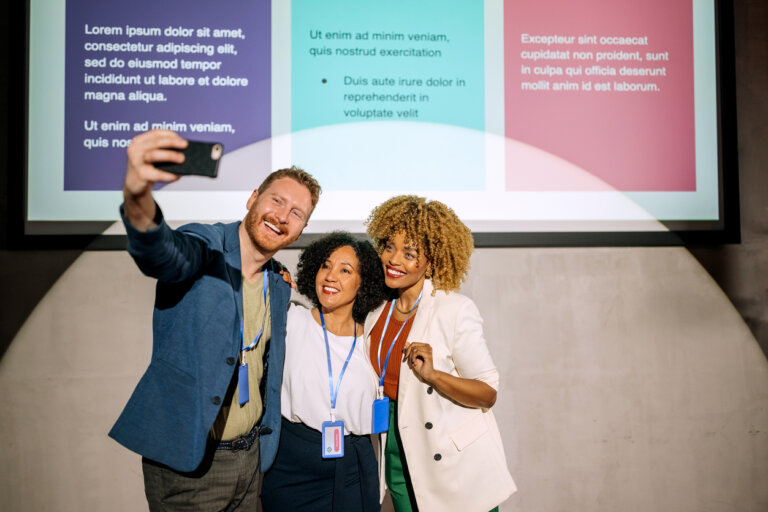As legal professionals, optimizing your LinkedIn presence is essential to grow your network, engage with potential clients, and showcase your expertise. The platform is moving away from casual, opinionated content and back into a reliable, professional source of information.
In this article, we’ll explore the key changes brought about by the June 2023 LinkedIn update and provide you with actionable best practices to leverage this algorithm to your advantage.
Nonprofessional content will not be rewarded the way it has been
After 2020, there was a merge between professional life and personal life on LinkedIn. Casual posts and nonprofessional content garnered attention. You may have seen some of these posts. It’s usually a heartwarming story about struggle followed by success—here’s a satire, if you need a reference.
LinkedIn is going back to strictly professional, valuable content. Rather than promoting the most engaging content, it will favor expert knowledge.
In other words, ensure that your LinkedIn content aligns with these new standards by avoiding irrelevant personal updates and keeping your tone professional. This will help you maximize your content’s reach and impact.
Going forward, your LinkedIn posts should provide professional value:
- Showcase your legal expertise.
- Address current industry issues.
- Offer helpful tips for your connections.
First-degree connections are extremely important
LinkedIn has always valued strong connections, and this update accentuates the significance of your first-degree connections even further. Engaging with your immediate network is crucial to establish meaningful relationships and build trust within your professional community.
Remember, there are multiple types of connections on LinkedIn:
- 1st-degree: People you’re directly connected to
- 2nd-degree: People who are connected to your 1st-degree connections
- 3rd-degree: People who are connected to your 2nd-degree connections
- Followers: People who have chosen to follow your public updates
- Fellow group member: People who are in a shared group with you
- Out-of-network: People you have no connection to
With the new algorithm, posts coming from your 1st-degree connections will be filtered so you see them more often on your feed. More specifically, you’ll now see posts from people you know far more often than posts from 2nd-degree, 3rd-degree, or suggested accounts.
According to LinkedIn, the most valuable content comes from the people you know.
So, take the time to connect with fellow lawyers, clients, and industry leaders. Personalize your connection requests with a brief introduction, reminding them of any previous interactions or common interests.
Participate, don’t spectate
Beyond simply sharing content, active participation is key to staying relevant in the updated algorithm. In part, the LinkedIn algorithm relies on other LinkedIn users to figure out whether you are a valuable source of information—which is why it is so critical to get others in your niche or industry to engage with your content.
When others engage with your content, it notifies the algorithm that you’re providing legitimate, valuable insight.
Comments are more important now. You want to encourage relevant comments that provide deeper support for your content. At the very least, encourage participation and engagement. A ton of careless “I agree” comments will not improve your ranking, according to the new algorithm.
It works both ways, too.
Repost what others say and respond to people’s comments. A good rule of thumb is to write a minimum of two sentences in your response/repost. Engage with industry-specific groups, participate in discussions, and share your insights and knowledge in a helpful and non-promotional manner. When you join discussions, make sure your comments are well-thought-out and contribute meaningfully to the conversation.
When posting, explain yourself and cite your sources
Finally, the new algorithm update places more value on well-researched and supported content. To this end, LinkedIn is going to attempt to differentiate between opinions and advice. However, it has not yet specified how this will be done.
Get ahead of this new update by reminding yourself to provide a “why” element to each post, repost, and comment. When you share your legal expertise or insights, explain your thought process clearly and back it up with reputable sources, studies, or legal precedents.
If you want to share your opinion, that’s great—but make sure to say “why”.
Citing reliable sources not only strengthens your credibility but also adds value to your audience, demonstrating your commitment to accurate information and professionalism.
Review and next steps
LinkedIn can be a powerful tool to expand your legal network, showcase your expertise, and attract potential clients. Stand out in this evolving landscape by positioning yourself as a knowledgeable legal professional within your field. Emphasize valuable and relevant content, prioritize first-degree connections, engage actively with your network, and provide well-supported insights.
Let the specialists at Omnizant support your digital transformation. Our comprehensive range of services, including social media marketing, copywriting, and website design, is tailored to elevate ambitious law firms that are ready for explosive growth. Book a consultation today!

